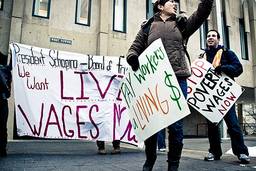After a nine-year wait, local voices and music are poised to gain major access to urban airwaves.
Yesterday morning, the House Energy and Commerce Committee unanimously passed The Local Community Radio Act (LCRA), a bill that would repeal restrictions on low power FM (LPFM) radio stations. “All I can say is, it's about time,” said Rep. Anna Eshoo (D-Ca.), a co-sponsor of the bill.
In 2000, Congress blocked urban, local stations from getting on the air, citing the broadcast lobby's concerns over signal interference. The FCC has advocated for a repeal of these restrictions since 2003, when the "Mitre Report" determined these 100-watt stations did not interfere with full-power stations' signals. In September, at the first Congressional Oversight Hearing since three new chairmen joined the commission, the FCC unanimously confirmed its support for the Act.
Co-sponsored by Reps. Mike Doyle (D-Pa.) and Lee Terry (R-Neb.), the bipartisan bill seems likely to pass. Yesterday, the industry publication Radio Business Report wrote, “This train has built up a head full of steam and appears to be unstoppable.” Cliff Stearns (R-Fl.), who co-sponsored the anti-LPFM bill in 2000, recently announced his support. So did Greg Walden (R-Or.), the house committee's only broadcasting industry veteran.
The Chicago Independent Radio Project (CHIRP) is ecstatic about the bill. A volunteer-run, community project, CHIRP will begin streaming CHIRPradio.org online this fall. Committed to “focusing on the vibrant culture of a community that often flies under the radar,” their broadcast license depends on the Local Community Radio Act’s passage.
There are currently over 800 rural, 3-7 mile radius LPFM stations in the United States; the New York Times predicts this number will more than double if this legislation is passed. Run by colleges, labor unions, religious organizations and other nonprofits, these stations relay important information and act as—and amplify—unique community voices. (When Hurricane Katrina hit, local radio was the only news source for some. A St. Paul station gives a voice to the area’s Southeast Asian Hmong community.)
Radio today is overwhelmed by top ten hits, bloviating celebrity talking heads and never-ending commercials. Passage of The Local Community Radio Act could change that.
As Jenny Lizak wrote on CHIRP’s site yesterday, “today’s great news should be a cause for celebration, but also a time to light the fire under all of us.”
Chenault Taylor, a former In These Times web intern, is a student at Northwestern University.


